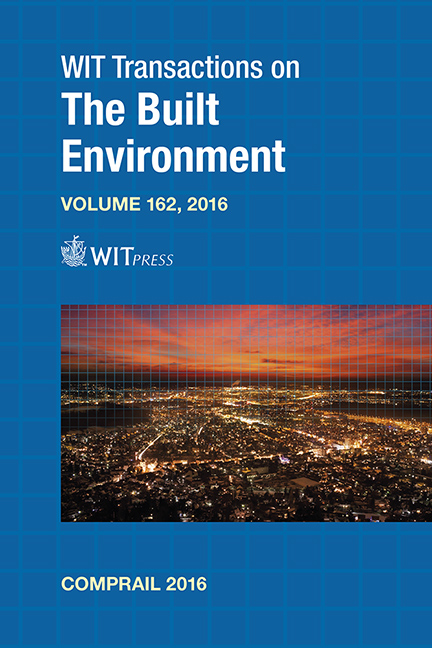Assessing The Sustainability Of Design And Maintenance Strategies For Rail Track By Means Of Life Cycle Cost Analysis
Price
Free (open access)
Transaction
Volume
162
Pages
12
Page Range
251 - 262
Published
2016
Size
2,154 kb
Paper DOI
10.2495/CR160231
Copyright
WIT Press
Author(s)
F. G. Praticò, M. Giunta
Abstract
According to the European vision for transport, the increase of train speed (especially for passenger traffic) and axle load, interoperability (technical compatibility of infrastructure, rolling stock, signalling and other subsystems of the rail system), and the increase of axle load are relevant goals to achieve in the future. The above goals interact with the following challenges: making infrastructure more reliable and resilient, keeping pace with the growing mobility requirements, reducing the impact of infrastructure on the environment (carbon footprint), maintaining and upgrade deteriorating transport infrastructures (renewal processes), applying innovative track design and materials. Ballast-less, slab track systems seem to be suitable to the aim, especially when high-speed passenger trains share the track with freight trains, although ballasted track is still widely used in high-speed lines. In light of the above, the study described in this paper aims at setting up a method for assessing the best strategy for the design and management of a railway track over time (maintenance and renewal), considering a long-term perspective and tangible and intangible costs. For both traditional ballasted and innovative slab tracks, life cycle costs are estimated based on agency (construction, inspection, maintenance and renewal), environmental (CO2 emission), and user (delays-related etc.) present values. The trend of agency, user, and externality costs of the alternatives over the entire life cycle of the infrastructure allows recognizing the most sustainable solution. Results show that solutions that are reasonably priced in the short term can yield maintenance and renewal processes which are unfavourable or less sustainable in the long term. Furthermore, which may impact public opinion and overall judgment, the “distance” between the (total) present value of the ballasted or ballast-less options becomes too small to yield sound conclusions in favour of the first versus the second solution.
Keywords
ballasted track, slab track, life cycle cost, sustainability





